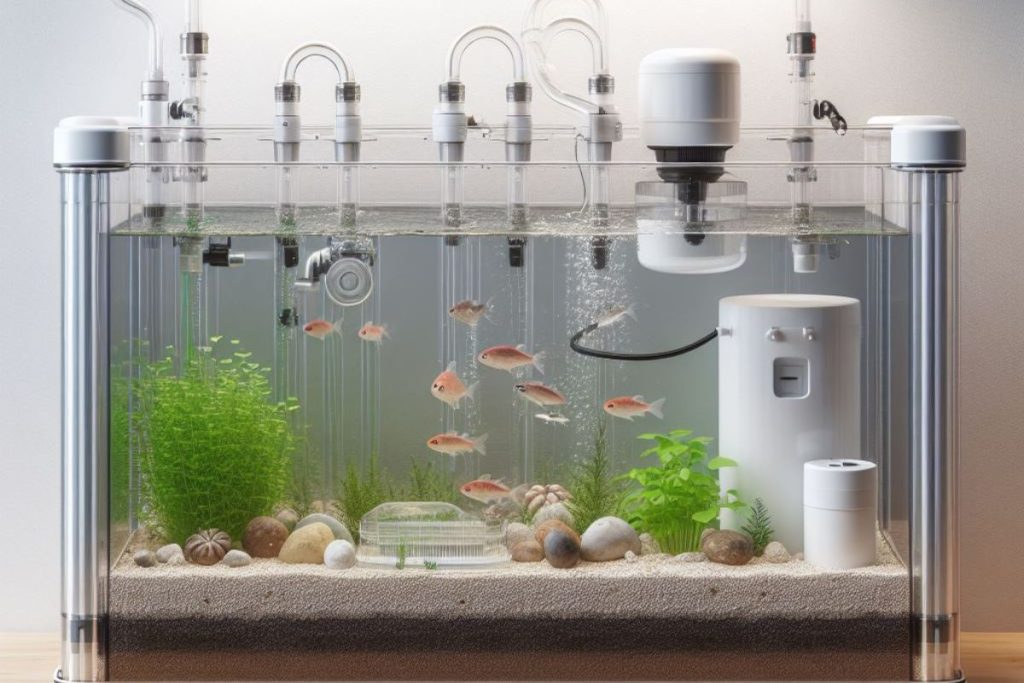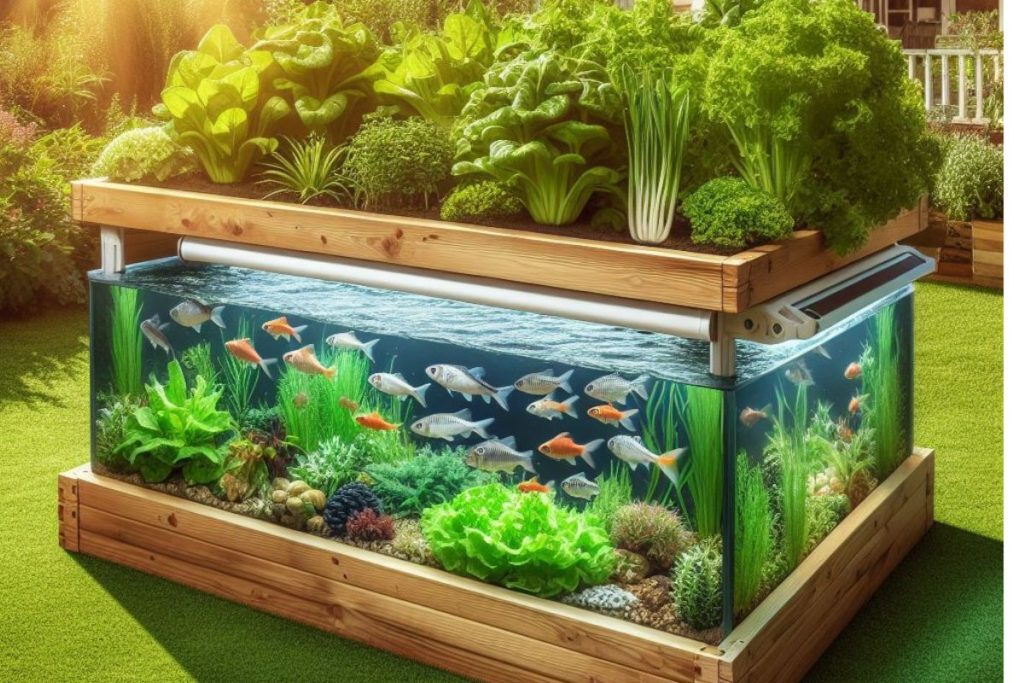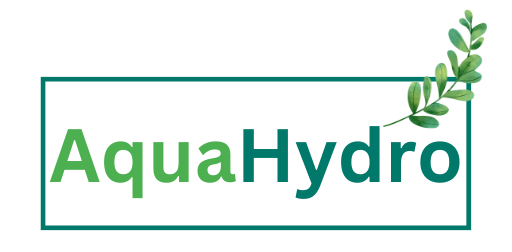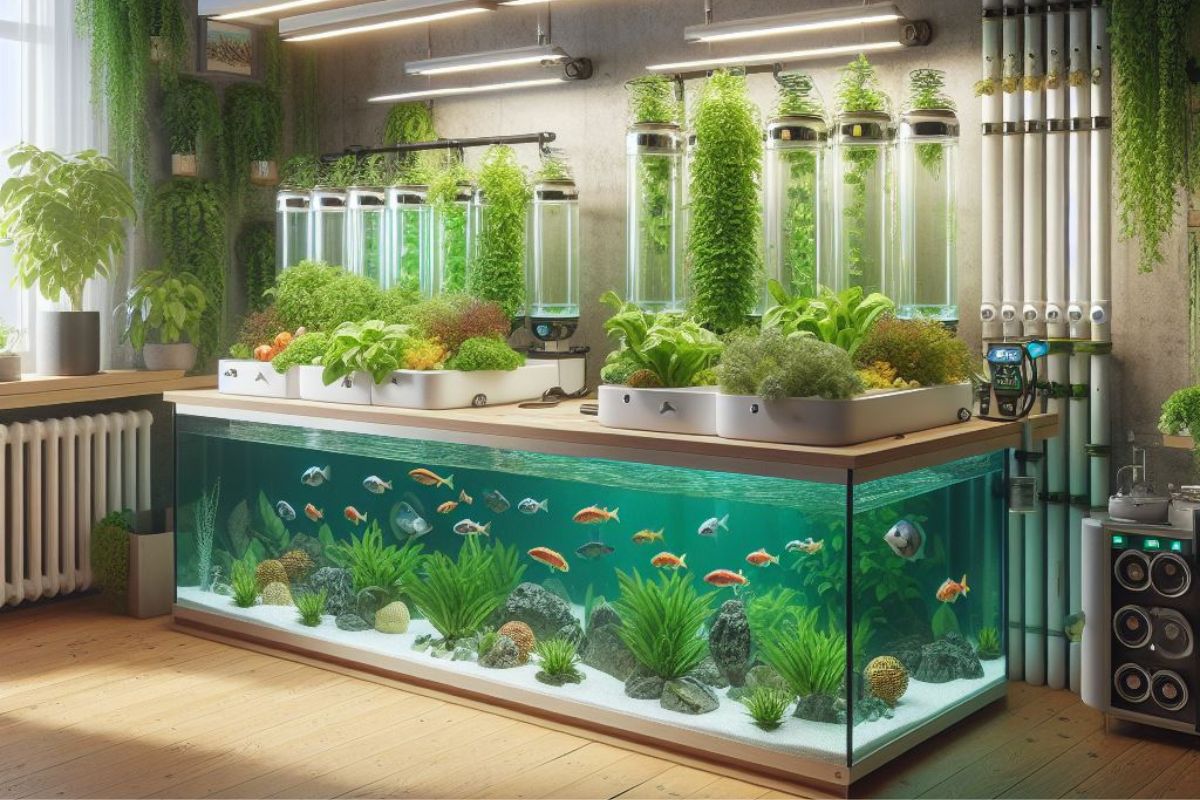Aquaponics, the symbiotic cultivation of fish and plants, has gained immense popularity for its sustainable and space-efficient approach to home gardening. In this article, we will explore the world of home aquaponics system, from setup to harvest, debunking myths along the way, and uncovering the joys and challenges of this fascinating endeavor.
Benefits of Home Aquaponics Systems
Sustainable Farming
Home aquaponics combines aquaculture and hydroponics, creating a closed-loop system where fish waste provides nutrients for plants, and the plants purify the water for the fish. This sustainable approach reduces the need for external fertilizers and minimizes water wastage.
Space-Efficient
Traditional gardening can be space-intensive, but aquaponics is designed for compact urban living. Vertical systems and small-scale setups allow individuals with limited space to cultivate a diverse range of crops.
Low Environmental Impact
With no soil involved and minimal water usage, home aquaponics has a lower environmental footprint compared to conventional farming. It’s an eco-friendly way to enjoy fresh produce right from your living space.
Setting Up Your Home Aquaponics System

Choosing the Right Location
Select a location with ample sunlight for plant growth and consider indoor options with artificial lighting if outdoor space is limited. Ensure a stable surface for the aquaponics system and easy access for maintenance.
Selecting Fish and Plants
Research and choose fish species compatible with your climate and personal preferences. Popular choices include tilapia and trout. Pair them with vegetables like lettuce, herbs, and tomatoes, creating a harmonious ecosystem.
Assembling the System Components
Gather essential components such as a fish tank, grow bed, water pump, and aeration system. Follow step-by-step guides or consult experts to assemble your aquaponics system correctly.
Cycling and Stabilizing Your Aquaponics System
Importance of Cycling
Cycling your system is crucial for establishing beneficial bacteria that convert fish waste into plant nutrients. Be patient during this initial phase, as it sets the foundation for a thriving ecosystem.
Monitoring Water Parameters
Regularly check pH levels, ammonia, nitrate, and nitrite concentrations to ensure a balanced environment. Understanding these parameters helps prevent potential issues and keeps your fish and plants healthy.
Troubleshooting Common Issues
Address challenges such as algae growth, nutrient deficiencies, or fish health concerns promptly. A proactive approach to problem-solving ensures the long-term success of your home aquaponics system.
Maintaining a Healthy Aquaponics Ecosystem

Feeding and Monitoring Fish
Provide high-quality fish feed and monitor their behavior for signs of stress or illness. A well-fed and content fish population contributes to nutrient-rich water for your plants.
Caring for Aquatic Plants
Regularly prune and harvest your plants to maintain a balanced ecosystem. Watch for signs of pests or diseases and take preventive measures to protect your crops.
Regular System Checks
Perform routine checks on system components, including pumps, filters, and pipes. Clean or replace parts as needed to prevent malfunctions that could disrupt the delicate balance of your aquaponics system.
Harvesting and Enjoying the Fruits of Your Labor
Harvesting Fish
When your fish reach maturity, harvest them for a fresh and sustainable source of protein. Ensure humane and ethical practices during the harvesting process.
Harvesting Vegetables
Enjoy the satisfaction of harvesting homegrown vegetables. Experiment with recipes that showcase the flavors of your aquaponically cultivated produce.
Culinary Ideas for Homegrown Produce
Explore creative ways to incorporate your aquaponics harvest into meals. From salads to grilled fish dishes, the possibilities are endless.
Common Myths and Misconceptions about Home Aquaponics
Addressing Water Usage Concerns
Contrary to belief, aquaponics systems use less water than traditional soil-based gardening. The closed-loop system conserves water by recirculating it through the fish tanks and grow beds.
Debunking the Complexity Myth
While aquaponics may seem complex at first glance, advancements in technology and accessible resources have simplified the process. With proper guidance and a commitment to learning, even beginners can successfully set up and maintain a home aquaponics system.
Dispelling Maintenance Challenges
Some may worry about the maintenance demands of an aquaponics system, but routine checks and preventive measures significantly reduce the likelihood of issues. The rewards of fresh produce and the joy of nurturing an ecosystem far outweigh the minimal effort required.
Success Stories and Testimonials
Discovering the experiences of others who have ventured into home aquaponics can be inspiring. Success stories range from individuals cultivating vibrant gardens in small apartments to families enjoying a sustainable source of fish and vegetables. Real-life examples highlight the adaptability and scalability of aquaponics systems.
Innovations in Home Aquaponics Systems
Smart Aquaponics Technologies
Embrace the future with smart technologies that monitor and regulate your aquaponics system. Automated sensors, remote controls, and data analytics contribute to efficient and optimized operations.
Integration with Home Automation
Connect your aquaponics system to your home automation network. This integration allows for seamless control, ensuring the well-being of your fish and plants with the convenience of a smartphone app.
Future Trends
Stay informed about upcoming trends in home aquaponics. From sustainable materials for system components to breakthroughs in fish and plant varieties, the evolving landscape offers exciting possibilities for enthusiasts.
Educational Opportunities in Aquaponics
Learning Resources
Dive into a wealth of educational materials available online and in local communities. Books, articles, and online courses provide valuable insights into the science and art of aquaponics.
Workshops and Courses
Participate in workshops or courses conducted by experienced aquaponics practitioners. Hands-on learning and direct interaction with experts accelerate your understanding and enhance your practical skills.
Community Building through Aquaponics
Connecting with Fellow Enthusiasts
Engage with a community of like-minded individuals who share your passion for aquaponics. Social media groups, forums, and local meet-ups create opportunities to exchange ideas, seek advice, and celebrate successes.
Sharing Experiences and Tips
Share your own experiences to contribute to the collective knowledge of the aquaponics community. Whether you’ve overcome challenges or discovered innovative solutions, your insights can inspire others on their journey.
Joining Aquaponics Clubs or Forums
Consider joining local or online aquaponics clubs and forums. These platforms provide ongoing support, camaraderie, and a sense of belonging to a community dedicated to sustainable and rewarding home gardening.
Challenges and Solutions in Home Aquaponics
Dealing with Pest Issues
While aquaponics systems minimize soil-related pests, aquatic pests, and algae may still pose challenges. Implement natural solutions, such as introducing beneficial insects or adjusting nutrient levels, to address these issues.
Balancing Nutrient Levels
Maintaining the right balance of nutrients is crucial for plant health. Regularly test and adjust nutrient levels, ensuring a harmonious environment that promotes robust growth.
Adapting to Seasonal Changes
Consider seasonal variations in temperature and sunlight when managing your aquaponics system. Implement adjustments, such as shading during hot months or providing additional lighting in winter, to optimize conditions.
Conclusion: Dive into the Aquaponics Adventure
Embarking on the journey of home aquaponics opens the door to a sustainable and fulfilling way of cultivating your food. The blend of aquaculture and hydroponics conserves resources and fosters a deeper connection to the food you consume. As you witness the flourishing ecosystem you’ve created, the rewards will extend beyond your dinner plate.

